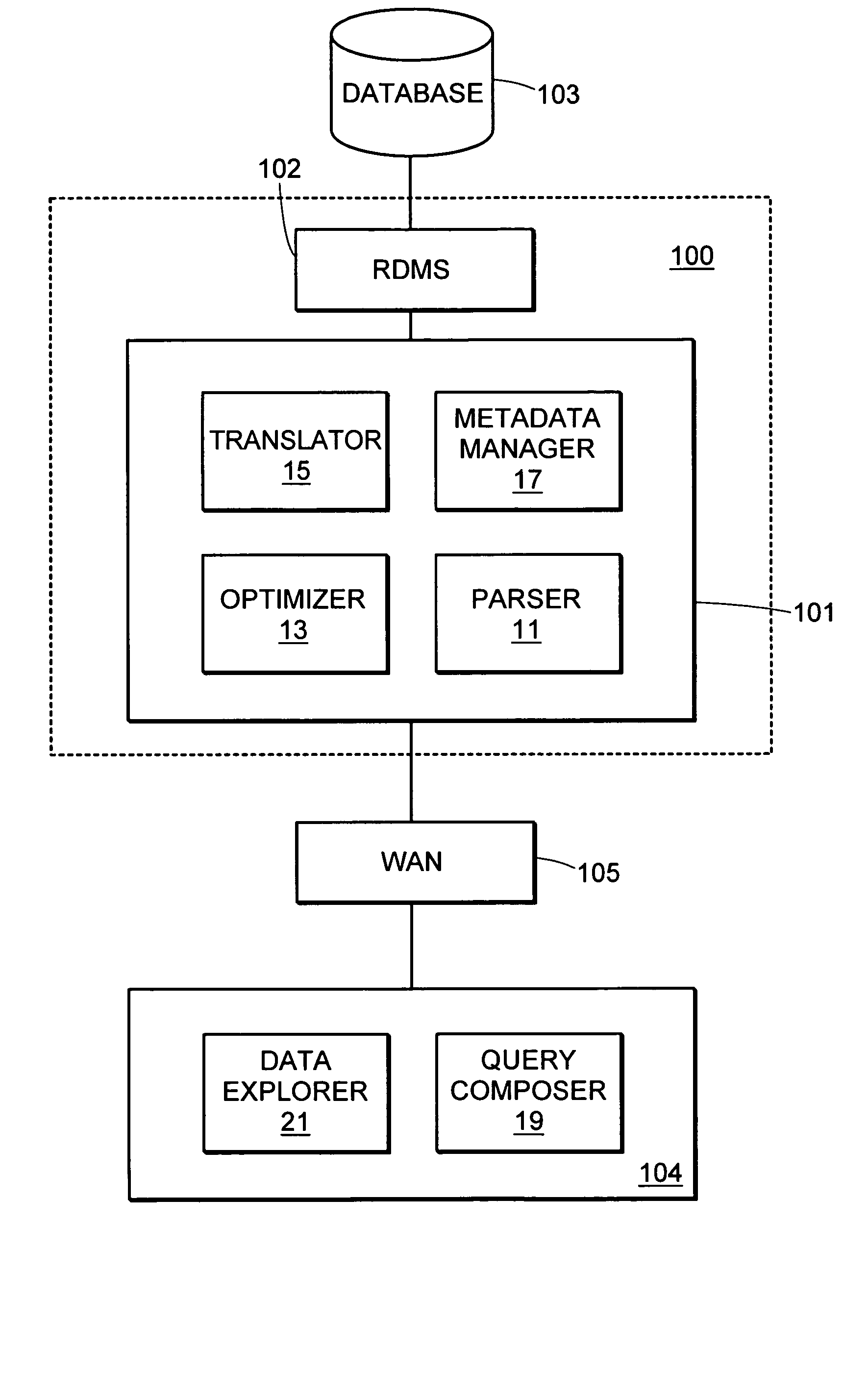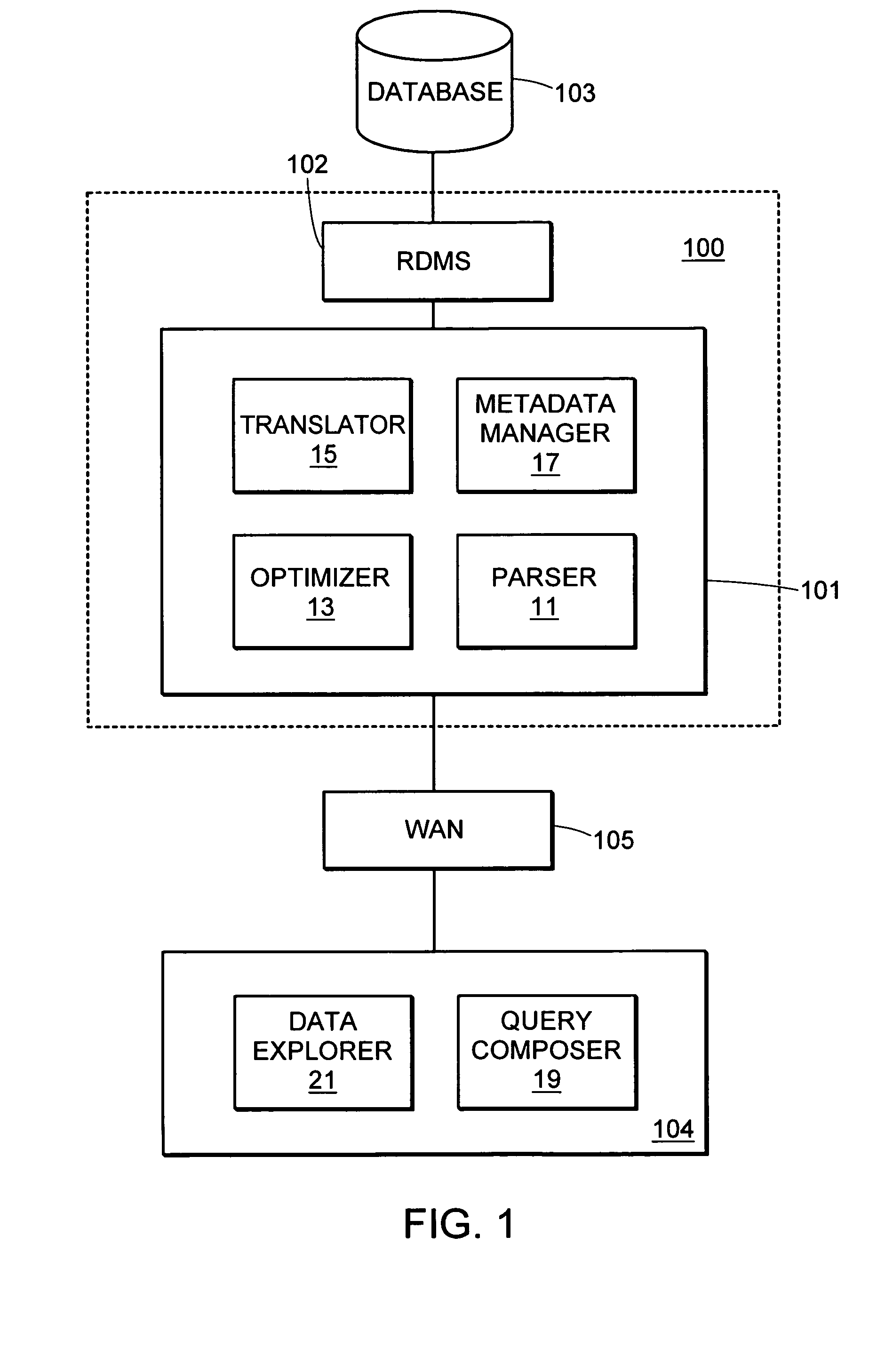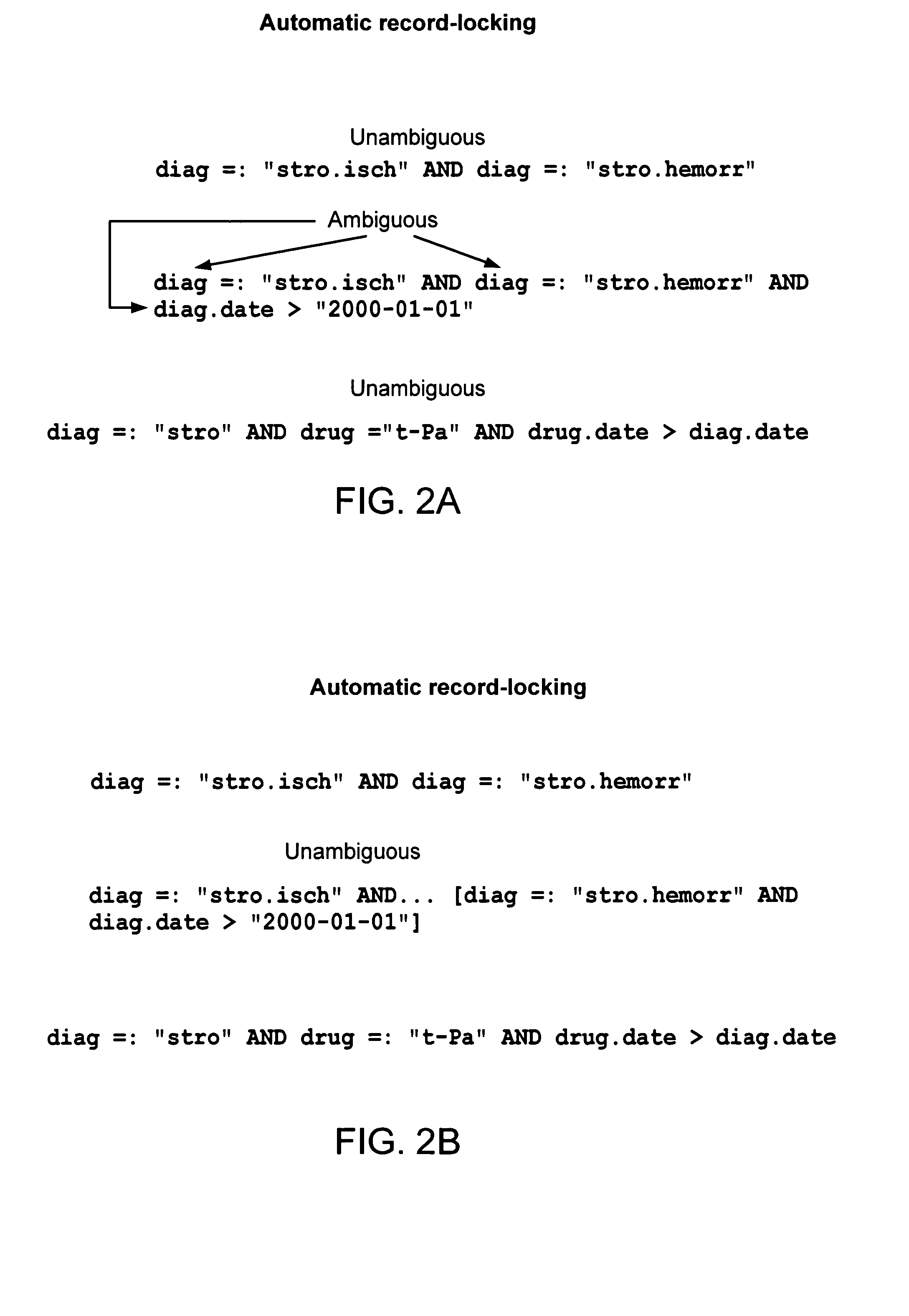Set definition language for relational data
- Summary
- Abstract
- Description
- Claims
- Application Information
AI Technical Summary
Benefits of technology
Problems solved by technology
Method used
Image
Examples
Embodiment Construction
As mentioned earlier, the SDL system and its language was developed with the particular aim in mind to facilitate ad-hoc queries for scientists working with life science data. Hence, the usefulness of the language depends not only on its syntax but also on how well the GUI components support the language and the process of composing queries. In this text, applicants primarily focus on the invention SDL language and its semantics but mention GUI related design issues where it facilitates understanding of the language design.
An important aspect in the overall system design was to use metadata to make data “application independent” and ensure that no logic is embedded in applications that is necessary for interpreting the meaning of data. This metadata is also used to provide data dependent logic to specialized GUI components and widgets that can be used to facilitate application development. An example of such modules are SDL syntax aware editor, data browsing and data entry widget...
PUM
 Login to View More
Login to View More Abstract
Description
Claims
Application Information
 Login to View More
Login to View More - R&D
- Intellectual Property
- Life Sciences
- Materials
- Tech Scout
- Unparalleled Data Quality
- Higher Quality Content
- 60% Fewer Hallucinations
Browse by: Latest US Patents, China's latest patents, Technical Efficacy Thesaurus, Application Domain, Technology Topic, Popular Technical Reports.
© 2025 PatSnap. All rights reserved.Legal|Privacy policy|Modern Slavery Act Transparency Statement|Sitemap|About US| Contact US: help@patsnap.com



